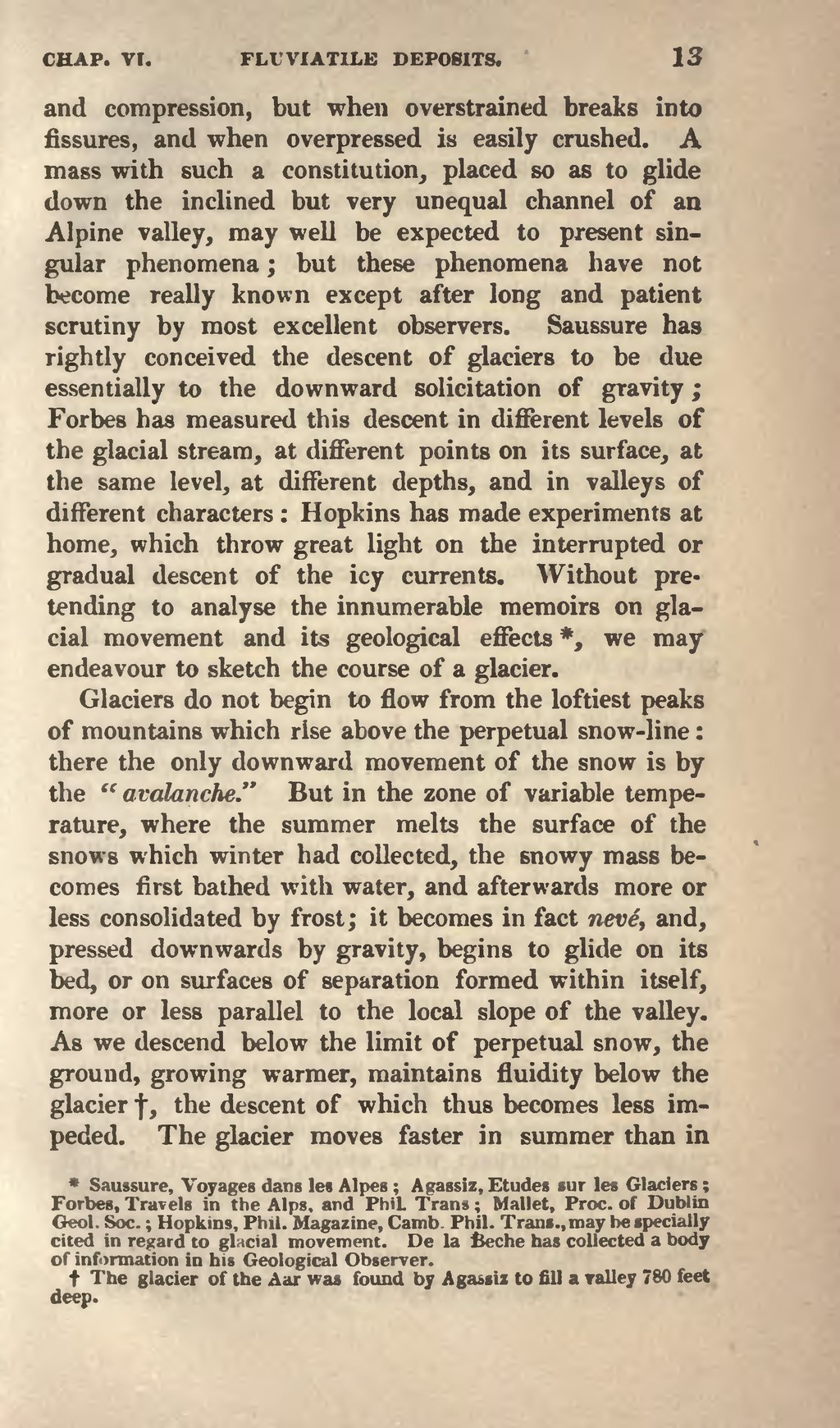and compression, but when over strained breaks into fissures, and when over pressed is easily crushed. A mass with such a constitution, placed so as to glide down the inclined but very unequal channel of an Alpine valley, may well be expected to present singular phenomena; but these phenomena have not become really known except after long and patient scrutiny by most excellent observers. Saussure has rightly conceived the descent of glaciers to be due essentially to the downward solicitation of gravity; Forbes has measured this descent in different levels of the glacial stream, at different points on its surface, at the same level, at different depths, and in valleys of different characters: Hopkins has made experiments at home, which throw great light on the interrupted or gradual descent of the icy currents. Without pretending to analyse the innumerable memoirs on glacial movement and its geological effects[1], we may endeavour to sketch the course of a glacier.
Glaciers do not begin to flow from the loftiest peaks of mountains which rise above the perpetual snow-line: there the only downward movement of the snow is by the "avalanche." But in the zone of variable temperature, where the summer melts the surface of the snows which winter had collected, the snowy mass becomes first bathed with water, and afterwards more or less consolidated by frost; it becomes in fact nevé, and, pressed downwards by gravity, begins to glide on its bed, or on surfaces of separation formed within itself, more or less parallel to the local slope of the valley. As we descend below the limit of perpetual snow, the ground, growing warmer, maintains fluidity below the glacier[2], the descent of which thus becomes less impeded. The glacier moves faster in summer than in
- ↑ Saussure, Voyages dans le Alpes; Agassiz, Etudes sur les Glaciers; Forbes, Travels in the Alps, and Phil. Trans; Mallet, Proc. of Dublin Geol. Soc.; Hopkins, Phil. Magazine, Camb. Phil. Trans., may be specially cited in regard to glacial movement. De la Beche has collected a body of information in his Geological Observer.
- ↑ The glacier of the Aar was found by Agassiz to fill a valley 780 feet deep.
